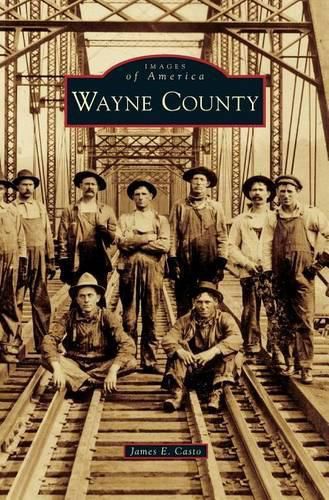Readings Newsletter
Become a Readings Member to make your shopping experience even easier.
Sign in or sign up for free!
You’re not far away from qualifying for FREE standard shipping within Australia
You’ve qualified for FREE standard shipping within Australia
The cart is loading…






This title is printed to order. This book may have been self-published. If so, we cannot guarantee the quality of the content. In the main most books will have gone through the editing process however some may not. We therefore suggest that you be aware of this before ordering this book. If in doubt check either the author or publisher’s details as we are unable to accept any returns unless they are faulty. Please contact us if you have any questions.
Wayne County, West Virginia, was established on January 18, 1842, from part of Cabell County and named for Gen. Mad Anthony Wayne. The state’s westernmost county, it lies at the juncture of two rivers: the Ohio and Big Sandy. The town of Wayne is the county seat. Although the southern half of the county was first to be settled, it was slow to develop. In contrast, the northern part bordering Cabell County grew rapidly. The city of Huntington ultimately expanded westward into Wayne County, an area now known as Westmoreland. In addition to Wayne and Huntington, the county has three other incorporated communities: Ceredo, Kenova, and Fort Gay. In the 19th century, timbering and farming were the county’s economic mainstays. The southern end of the county experienced a growth spurt when, in 1890, the Norfolk & Western Railway was completed to Kenova. Today, many residents commute to Huntington or nearby Ashland, Kentucky. The county is the birthplace of gospel singer Michael W. Smith, major league pitcher Donnie Robinson, and Fannie Belle Fleming, better known as stripper Blaze Starr.
$9.00 standard shipping within Australia
FREE standard shipping within Australia for orders over $100.00
Express & International shipping calculated at checkout
This title is printed to order. This book may have been self-published. If so, we cannot guarantee the quality of the content. In the main most books will have gone through the editing process however some may not. We therefore suggest that you be aware of this before ordering this book. If in doubt check either the author or publisher’s details as we are unable to accept any returns unless they are faulty. Please contact us if you have any questions.
Wayne County, West Virginia, was established on January 18, 1842, from part of Cabell County and named for Gen. Mad Anthony Wayne. The state’s westernmost county, it lies at the juncture of two rivers: the Ohio and Big Sandy. The town of Wayne is the county seat. Although the southern half of the county was first to be settled, it was slow to develop. In contrast, the northern part bordering Cabell County grew rapidly. The city of Huntington ultimately expanded westward into Wayne County, an area now known as Westmoreland. In addition to Wayne and Huntington, the county has three other incorporated communities: Ceredo, Kenova, and Fort Gay. In the 19th century, timbering and farming were the county’s economic mainstays. The southern end of the county experienced a growth spurt when, in 1890, the Norfolk & Western Railway was completed to Kenova. Today, many residents commute to Huntington or nearby Ashland, Kentucky. The county is the birthplace of gospel singer Michael W. Smith, major league pitcher Donnie Robinson, and Fannie Belle Fleming, better known as stripper Blaze Starr.